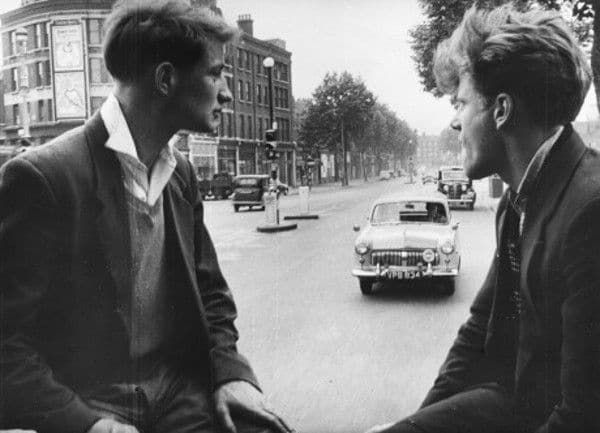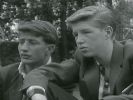Eye For Film >> Movies >> We Are The Lambeth Boys (1958) Film Review
We Are The Lambeth Boys
Reviewed by: Jennie Kermode

A fascinating slice of history recovered from the archives, We Are The Lambeth Boys is an observational documentary - occasionally incorporating interviews - that reveals as much through its tone as through its content. It's focused on a youth club which we are assured is one of the good ones and it depicts the live of young people between the ages of about 15 and 20 as they make the most of their freedom and prepare for adult life
Despite the title, there are girls present here too, but they exist on the periphery. One of the most striking things about the scenarios presented, from a modern perspective, is how little the boys and girls mix. High vantage points see groups of youngsters moving through corridors and social spaces, but despite the crowding, the boys are almost always in one group and the girls another, like immiscible liquids, making contact only at the edges. They seem to exist in parallel societies, friendly enough to one another but anticipating entirely separate destinies. Whilst the boys look for jobs in factories and trades, the girls type or sew or serve food, something, we are told, which should provide them with plenty of opportunity until they get married. The sports facilities in the yard, and the debating society, are occupied almost exclusively by boys. Girls seem welcome enough; perhaps it just doesn't occur to them that they could enjoy these things.

Further evidence of cultural change is to be found in dress - not just in changes fashion, but in formality. Whether at the club or on a night out on the town, the boys wear suits. The girls all have perfectly coiffed hair. These gestures of propriety sit at odds with the cheery banter in the club and the pleasure the boys take in shouting at strangers from an open top bus. It's all in good fun, of course. There's no room here to imagine that these good kids could ever intimidate or harm anyone. It's an attitude at once naive and refreshing - how often do we encounter such a positive perspective on teenage exuberance today?
The film is attractively shot in grainy black and white that has survived the decades well. Occasionally its urban vistas verge on the noirish, as when the boys are catcalling at a group of girls in the city at night, and there's a sense then that we're seeing more than the director intended. Narration is delivered in what would later become known as a 'BBC accent', cheery but paternalistic, implying not just age but also class difference - for all that we are looking at working class culture, we seem to be doing so from the outside. Nevertheless, some younger viewers may well envy the young people in the film. Their club has dancing every night, its own cafeteria, and a wealth of facilities - it's not just the draughty annex with a pool table in it that's commonplace today. The late 1950s were an optimistic time and that optimism saturates the film. The teenagers may not know where they're going but they're ready to set the pace.
Reviewed on: 25 Mar 2016















